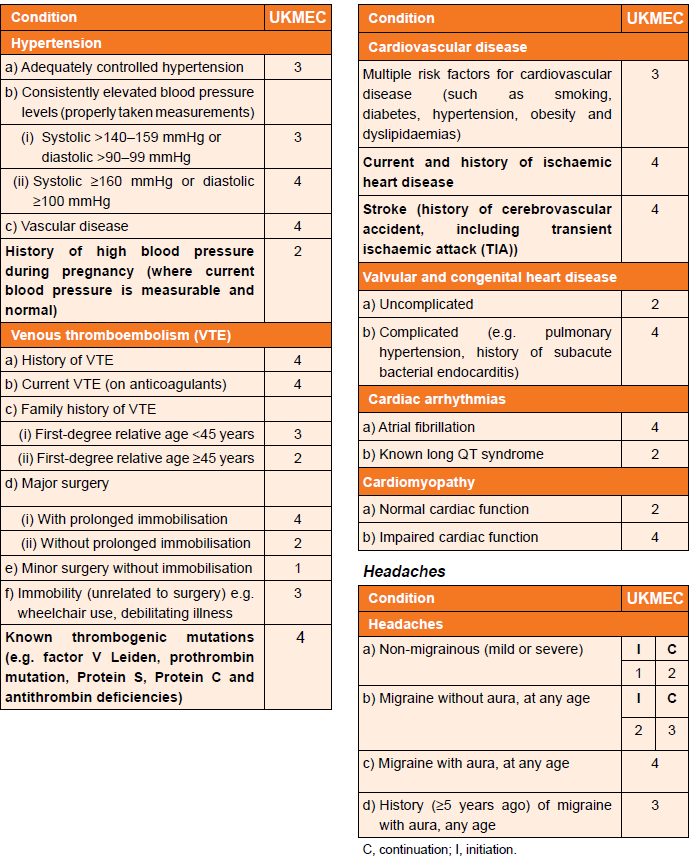Oral contraceptive pill (risk factors for arterial disease)
- a combined pill containing a low dose of oestrogen (i.e. 30 mcg) is indicated in women who have migraines without auras - this is because the risk of stroke is greater the higher the dose of oestrogen in the combined pill
- a DTB review (1) suggested that low-dose pill can also be given to women who have migraines without auras but have one additional risk factor for stroke - however the review emphasises that these patients must be followed up carefully
- prescribing decisions, with respect to combined hormonal contraception, are made based on the UKMEC criteria below which define migraine with an aura as an absolute contraindication to combined hormonal contraception - see below for further details and guidance with respect to different migraine scenarios
UKMEC Criteria state:
Cardiovascular factors (including migraine) and UKMEC categories (3):

In consideration of UKMEC criteria and combined hormonal contraception (CHC):

Check the summary of product characteristics before prescribing any combined oral contraceptive pill.
Reference:
- Drug and Therapeutics Bulletin (2000), 38 (1), 1-4.
- British National Formulary. Oral contraceptives.
- FSRH Clinical Guidance: Combined Hormonal Contraception; Faculty of Sexual and Reproductive Healthcare (January 2019 - amended October 2023)
Related pages
- Migraine and the combined oral contraceptive pill
- Combined oral contraceptive pill
- Oral contraceptives and smoking
- Oral contraceptives and hypertension
- Obesity and combined oral contraceptive
- UKMEC (UK Medical Eligibility for Contraceptive Use) criteria
- General contraindications to combined oral hormonal contraceptive
Create an account to add page annotations
Annotations allow you to add information to this page that would be handy to have on hand during a consultation. E.g. a website or number. This information will always show when you visit this page.